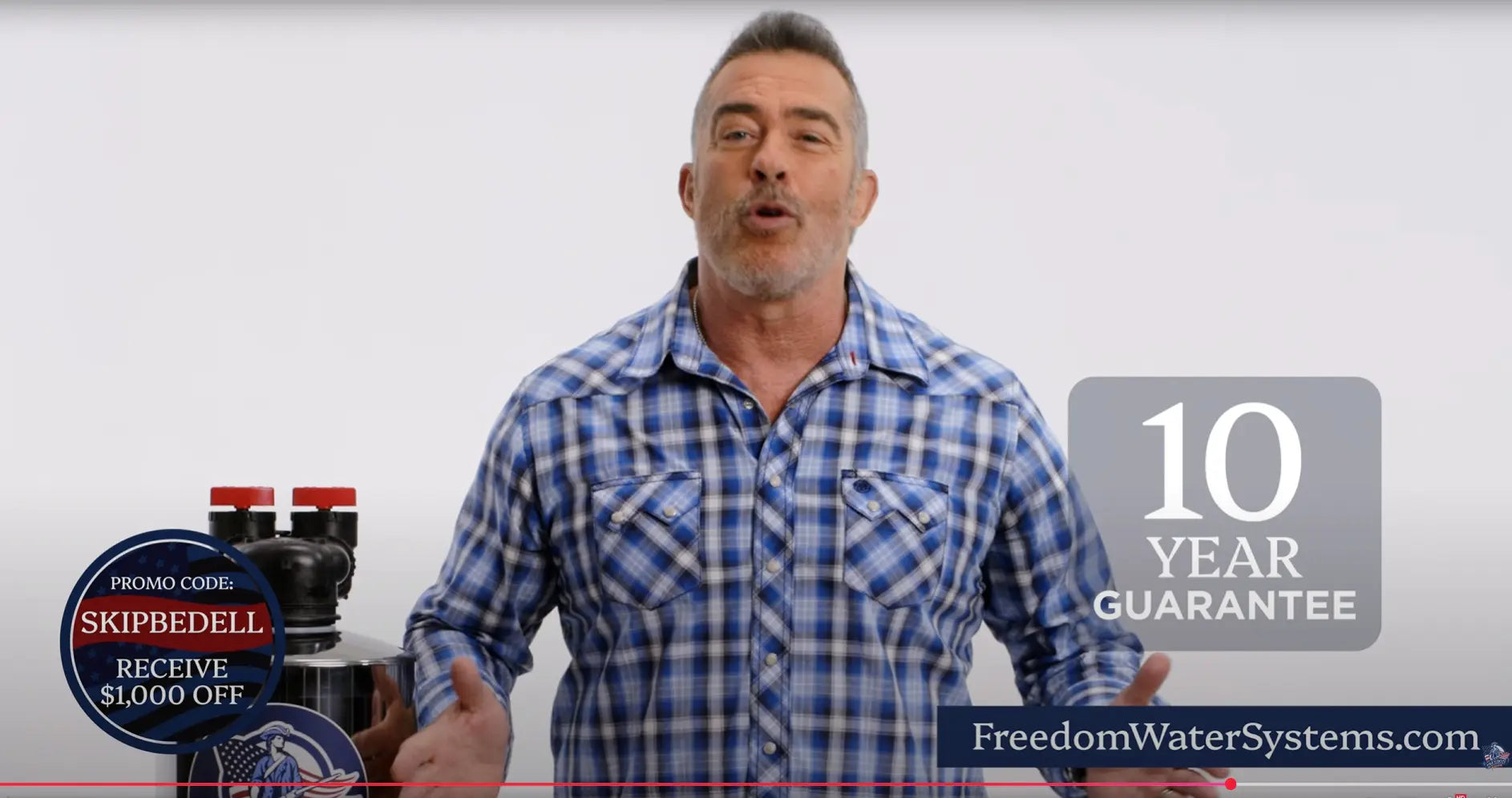Crack open a can of paint, spray your favorite air freshener, or fill up the lawn mower, and you’ll smell that sharp chemical tang almost instantly. Those fumes are volatile organic compounds, or VOCs—super-small chemicals that evaporate at room temperature. You expect them in a freshly painted room, but did you know the same molecules can hitch a ride into your drinking water? Sneaky.
Don’t panic—we’ll break everything down in plain English. By the end, you’ll know where VOCs come from, why they sometimes end up in city water, how to test for them, and the easiest way to kick them out of every tap with a whole home water filter.
What Exactly Are VOCs?
Scientists call them “volatile” because they vaporize quickly, and “organic” because they’re carbon-based. Think of gasoline fumes, dry-cleaning solvents, paint thinners, nail-polish remover, even some lawn pesticides. When VOCs spill, leak, or drift out of smokestacks, they can soak into soil and migrate into groundwater. Once underground, some VOCs break down in days; others linger for decades.
Common Everyday Sources
- Gasoline and diesel leaks – Underground storage tanks and pipeline breaks can seep benzene and toluene into aquifers.
- Industrial solvents – Factories use trichloroethylene (TCE) and perchloroethylene (PERC) to degrease metal parts or dry-clean clothes.
- Household chemicals – Paints, varnishes, adhesives, aerosol sprays, and even some cleaning wipes off-gas VOCs that wash down storm drains.
- Pesticides and herbicides – Lawn treatments can percolate through soil after a heavy rain.
Because VOC molecules are small and slippery, they travel fast in groundwater—and many are colorless and odorless at the concentrations that trigger health concerns. Translation: your water can look, smell, and taste fine while still harboring a chemical cocktail.
Health Risks: Why VOCs Matter
Short-term exposure might cause headaches, dizziness, or throat irritation. Long-term exposure is linked to far more serious problems:
- Liver and kidney damage
- Nervous-system disorders
- Developmental issues in children
- Certain cancers, including leukemia and liver cancer
The Environmental Protection Agency (EPA) sets legal limits for about 20 individual VOCs, but many limits date back decades. New research shows that even below-limit levels can pose risks over a lifetime. Legal doesn’t always equal safe.
Can VOCs Be in My Water?
If you rely on a public water utility, the only sure answer comes from your annual Consumer Confidence Report (CCR). Utilities test for regulated VOCs and must publish results by July 1 each year. If you draw from a private well, the responsibility is yours: the CDC recommends testing for VOCs at least every three years—or after a nearby chemical spill.
DIY Red Flags
You might suspect VOCs if:
- You live near gas stations, auto shops, or industrial facilities.
- Your home sits downhill from farmland that uses pesticides.
- You notice a gasoline-like smell when you run hot water (heat releases VOC vapors).
Still, many VOCs have no scent at all. A lab test is the only way to know for sure.
How to Test Your Water
- Request your CCR (for city water) or pick up a VOC test kit (for well water) from your county health department or a certified lab.
- Follow the sampling instructions to the letter—no perfumed soaps or freshly painted nails while sampling!
- Ship or deliver the sample within 24 hours; VOCs can escape from the bottle if it sits around.
- When results arrive, compare each chemical to its EPA Maximum Contaminant Level (MCL). Any detection above—or even close to—the limit deserves attention.
Filtration: Your Best Defense
Good news: removing VOCs is easier than pronouncing “trichloroethylene.”
Two superstar technologies shine:
Granular Activated Carbon (GAC)
Think of GAC as a molecular sponge. As water flows through, carbon granules trap VOC molecules in their microscopic pores. The Platinum Series Whole House Water Filter uses two beds of catalytic carbon plus KDF media, extending lifespan and VOC removal capacity.
Reverse Osmosis (RO)
RO pushes water through a semipermeable membrane that rejects most dissolved chemicals—including many VOCs. The ECO-X Whole House Water Filter stacks a carbon stage and an RO membrane, giving you two lines of defense in one compact tank.
For families who want maximum coverage with minimal fuss, pairing whole-home carbon filtration with an RO polishing stage is the gold standard. Showers, laundry, cooking, ice cubes—everything runs through the same protection, so you’re not juggling pitchers or under-sink gadgets in every bathroom.
Step-by-Step Action Plan
- Pull your CCR or schedule a lab test. No guessing—get data.
- Identify your top contaminants. VOCs often travel with chlorine byproducts and pesticides. A broad-spectrum filter covers them all.
- Choose a whole home water filter sized for your house. The ECO-X handles up to six bathrooms; the Platinum tackles larger homes or private wells.
- Install near the main water line. A licensed plumber can mount either system in half a day.
- Mark filter-change dates. Sediment pre-filters swap every 6–12 months; the main media in ECO-X lasts up to 10 years and The Platinum model is guaranteed for 20 years.
- Retest yearly. Peace of mind comes from proof.
Light at the End of the Tap
VOCs may sound like villains from a sci-fi movie, but with the right gear they’re easy to defeat. A robust whole home water filter eliminates the mystery chemicals, protects your family’s health, and—bonus—makes your water taste crisp and fresh.
Ready to ditch invisible threats? Explore our ECO-X and Platinum Series solutions, or contact us for a free water consultation. Clear water, clear conscience.
Q: What is a VOC, exactly?
VOCs—or volatile organic compounds—are carbon-based chemicals that evaporate easily and can seep into groundwater from fuel spills, industrial solvents, paints, and pesticides.
Q: Can VOCs really show up in city water?
Yes. While utilities monitor regulated VOCs, aging infrastructure and new spills mean trace amounts can still slip through and reach your tap.
Q: How do I test my water for VOCs?
Request your annual Consumer Confidence Report if you’re on city water, or send a sample to a certified lab. Well owners should test at least every three years.
Q: What filtration method removes VOCs best?
Granular activated carbon captures most VOCs. Pair it with reverse osmosis—like in the ECO-X and Platinum whole-home systems—for near-total removal.
Q: Will a whole-house filter hurt my water pressure?
No. Both ECO-X and Platinum maintain 10–25 gpm, plenty for simultaneous showers, laundry, and dish-washing.







